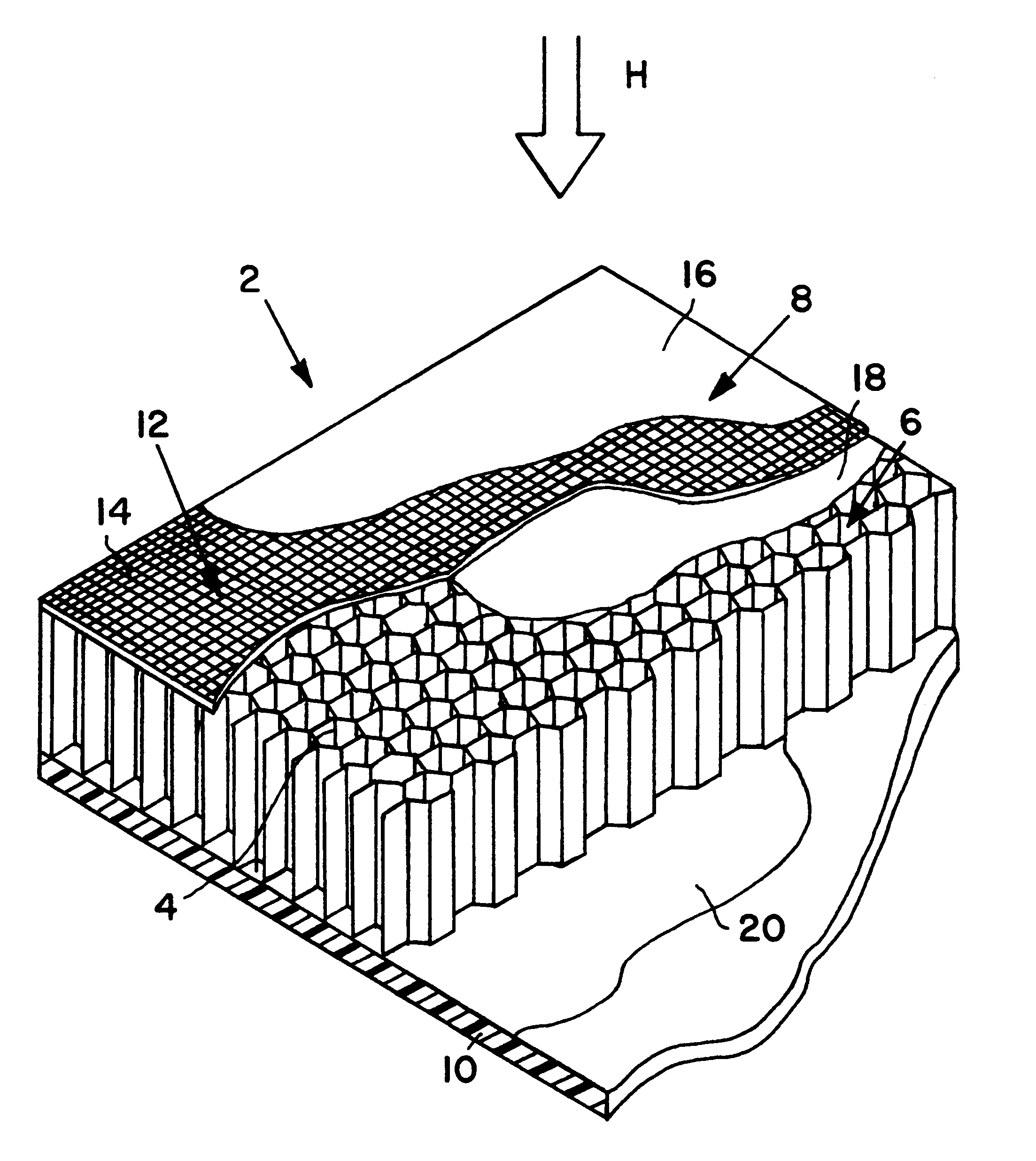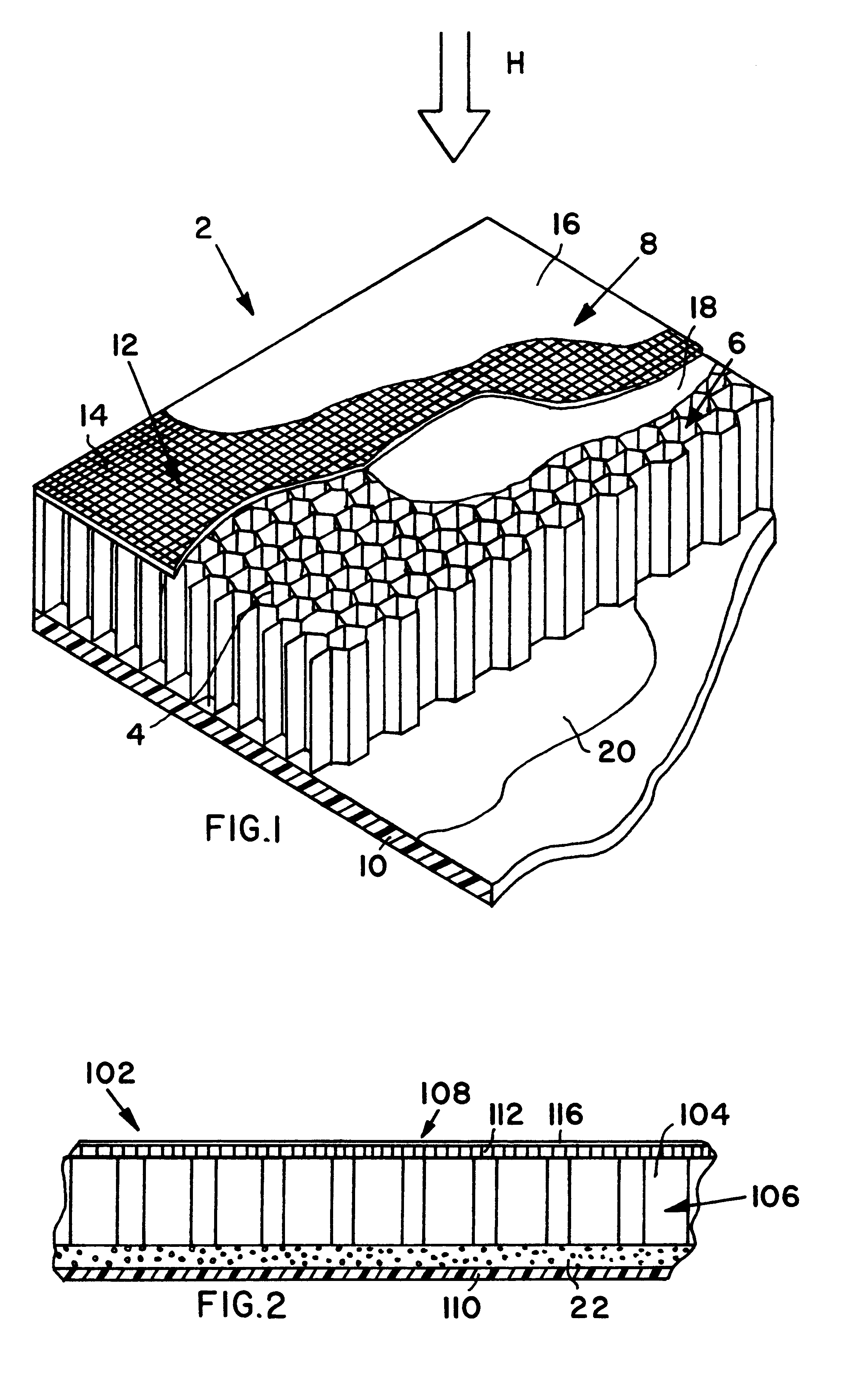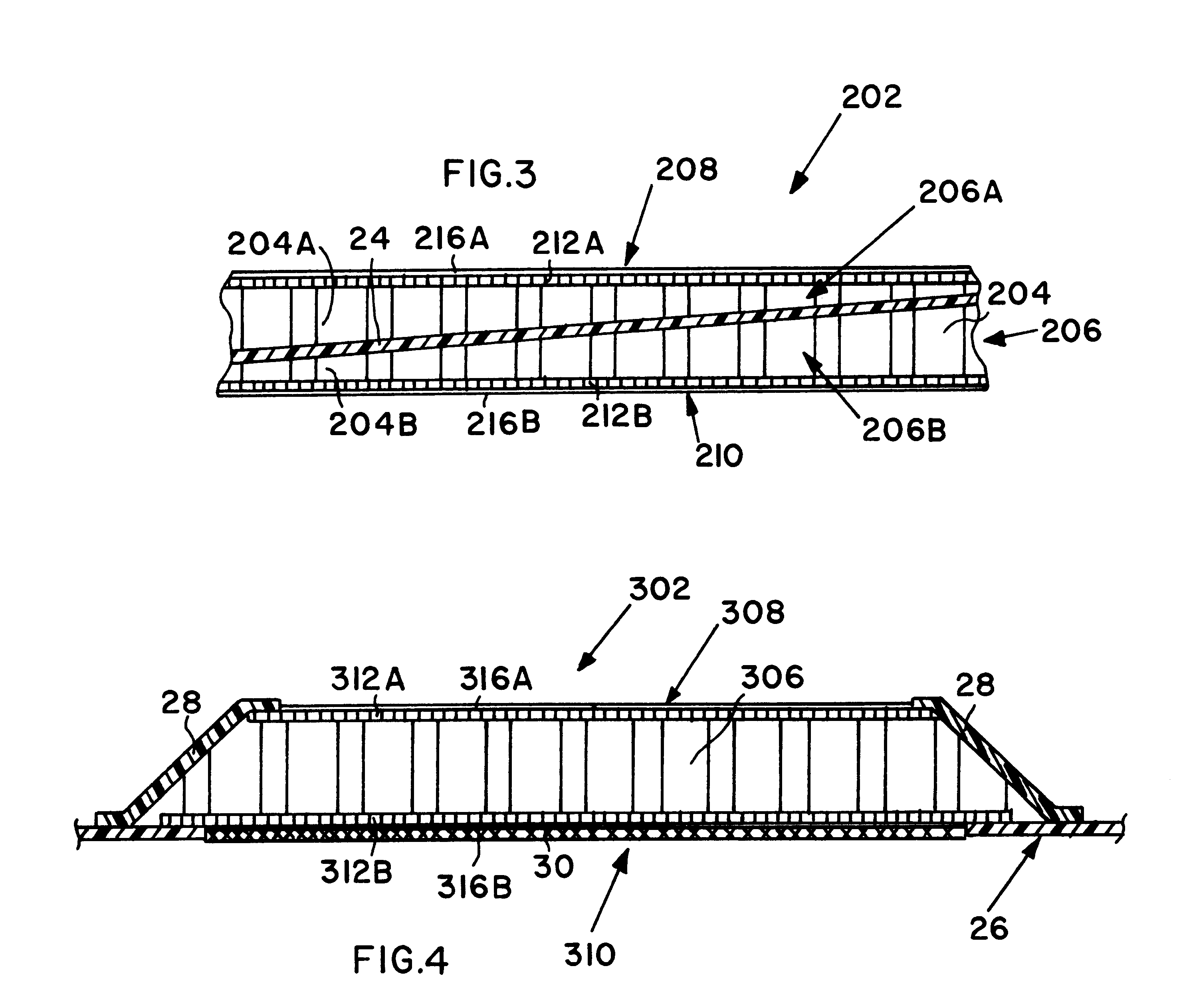Noise attenuating sandwich composite panel
- Summary
- Abstract
- Description
- Claims
- Application Information
AI Technical Summary
Benefits of technology
Problems solved by technology
Method used
Image
Examples
first embodiment
As shown in FIG. 1, a sandwich composite panel 2 according to the invention comprises a low density inner core 6 sandwiched between two outer fiber composite cover skins 8 and 10. The core 6 is particularly in the form of a honeycomb core 6 formed of upright standing hollow cell bodies 4, that extend transversely between the two cover skins 8 and 10. The core 6 can be any known type of hollow cell core, whereby the hollow cell bodies 4 may be any known tubular cell bodies, for example resin impregnated paper or cardboard cells, resin impregnated extruded fiber composite tubes, extruded metal tubes such as aluminum tubes, or a structure of stamp-formed resin impregnated fiber composite sheets or stamp-formed metal sheets. The cell bodies 4 may have hexagonal, round, quadrilateral, octagonal or varying cross-sectional shapes.
In this embodiment, the cover skins 8 and 10 are each fabricated of a glass fiber composite material including glass fibers bonded together, for example with any ...
third embodiment
As a further distinguishing characteristic, the inner core 206 of the present third embodiment is divided into two core portions 206A and 206B by a separating wall 24 that runs at an angle between the cover skins 208 and 210. While the small broken sectional view of FIG. 3 shows the separating wall 24 extending only with a single planar slope direction, it should be understood that the separating wall 24 can extend in zig-zag fashion sloping repetitively back and forth between the two cover skins 208 and 210.
The separating wall 24, which may be a solid fiber composite layer, separates the respective hollow cell bodies 204 into upper and lower cell bodies 204A and 204B. Due to the angled or sloping arrangement of the separating wall 24, the upper cell bodies 204A respectively and the lower cell bodies 204B respectively have varying hollow chamber heights over the area of the panel. Namely, the hollow cell bodies 204A respectively have varying chamber heights between the first cover s...
fourth embodiment
FIG. 4 illustrates a fourth embodiment in which the individual components corresponding to those discussed above have reference numbers increased by 300 relative to those used in FIG. 1. This embodiment is an especially preferred arrangement in which the composite panel 302 is an integral component of a load bearing structure 26 such as a helicopter fuselage cell or support frame. The panel 302 again comprises an inner honeycomb core 306 sandwiched between two cover skins 308 and 310, which are each respectively formed of an open mesh fiber composite net 312A and 312B covered by a respective cover film 316A and 316B. In view of the loads that will be introduced into and effective on the composite panel 302, this panel is particularly embodied as a high strength, high stiffness, lightweight composite structural panel. A secure load bearing connection of the panel 302 with the rest of the load bearing structure 26 (e.g. comprising metal or fiber composite structural members) is achiev...
PUM
 Login to View More
Login to View More Abstract
Description
Claims
Application Information
 Login to View More
Login to View More - R&D
- Intellectual Property
- Life Sciences
- Materials
- Tech Scout
- Unparalleled Data Quality
- Higher Quality Content
- 60% Fewer Hallucinations
Browse by: Latest US Patents, China's latest patents, Technical Efficacy Thesaurus, Application Domain, Technology Topic, Popular Technical Reports.
© 2025 PatSnap. All rights reserved.Legal|Privacy policy|Modern Slavery Act Transparency Statement|Sitemap|About US| Contact US: help@patsnap.com



